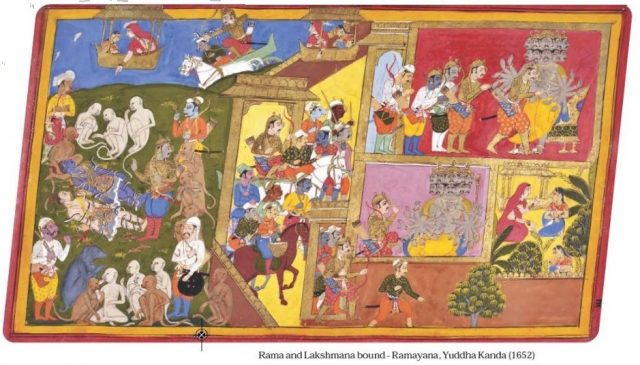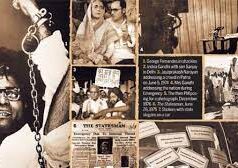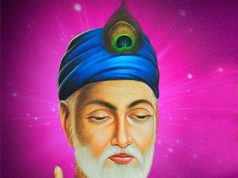
When the very existence of Sri Ram is being contested and Sri Ram Janmabhoomi movement is reaching to its culmination, we need to underline the difference between Itihasa and Western History and retrieve our Itihasa from our ancient texts
The word itihasa may be split as iti+ha+asa, meaning, “it thus happened”. Out of all the ancient Indian literature, including the Veda, the Purana, the Shastra, Kavya and many such others, there are only two works which are termed as itihasa, they being Valmiki’s Ramayana and Vyasa’s Mahabharata.
Valmiki’s Ramayana is a work that narrates the story of the life of Rama, who was one of the noblest of men and a righteous king of the kingdom of Ayodhya, in ancient India. It is a biography that showcases and highlights the attributes of the noblest king of Valmiki’s times and of all times.
Vyasa’s Mahabharata is a work that covers the history of the Hastinapura Kingdom and its dynasty including the great Kurukshetra war that was fought within the clan, for righteousness and the kingdom. Mahabharata also covers in parallel some of the incidents in the life time of Krishna, who established the kingdom city of Dwaraka and played a key role as an arbitrator in the events leading to the Kurukshetra war.
Both Rama and Krishna have been revered, over thousands of years, by millions of Indians in India and the world over, as divinities and are considered to be incarnations of Lord Vishnu on earth. But that does not take away the historicity of these personages as the millions of Indians have also strongly believed in the historicity of these personages and their times.
These two itihasas along with continuing local legends and traditions across thousands of years have kept alive the descriptions, the memories of those times, people and places and have been providing the grounds for this strong belief in the historicity of this land and these personages.
While one of the roles of these itihasas is to act as a chronicle of the events, these itihasas also had a more encompassing role to play in documenting history. Instead of
documenting the events and dates as disjoint records, they were written as a story with great details to also serve as a guidebook for people to learn a lesson or two from history and conduct their present lives suitably—the real role that history is supposed to serve.
Valmiki Ramayana
A Historical Biography
Valmiki Ramayana is a historical biography because Valmiki, the author of the original Ramayana text was a contemporary of Rama. This has been explicitly stated in the text itself. The story was not penned a few hundred years after the life of Rama. In fact, Valmiki was the guardian to the wife and sons of Rama.
This one fact gives it the credibility of being an authentic historical account. If we look at various historical texts world over, we find that the records of the events which happened, have usually been written down as history, about a few hundred or even few thousand years post the events having taken place, leaving room for some gaps.
In the case of Valmiki Ramayana, it is a text written by a person, Valmiki, who was contemporary to the people and period of events. Valmiki also plays an integral role in the events of Ramayana.
As to the authenticity of the content of Valmiki Ramayana that he had collated, Valmiki himself couches for it, when he meets Rama for the first time and introduces himself as: ““I am the 10th son of Pracheta, and I never remember speaking even one untrue sentence.” (Valmiki Ramayana 7.96.19) This emphatic statement of Valmiki gives a strong dimension of credibility to his Ramayana.
A case of flawed assumptions J S Mill and Charles Grant classified Indian texts as Mythological on the following grounds: Assumption- The events in these texts seemed to go before the date of creation of the earth fixed by Reverend James Ussher, the Archbishop of Ireland, as October 23, 4004 BC, 9AM. Hence these texts which describe India and the existence of its civilisation prior to this time could not be real and must be mythical or imaginary. Correction- The fact that this world was created on 23rd October, 4004 BC, has now been proven wrong by modern cosmology and traditional archaeological finding. Hence this premise of Mill and Grant has been found to be flawed. Assumption- It was held by the colonial British, that Alexander defeated Porus in 326 BCE and spread culture and civilised thought to India. Until then Indians were uncivilised barbarians. So, the civilisation described in these texts which seemed to be more advanced in science, technology, culture, philosophy and linguistics could not have existed prior to the arrival of Alexander and hence the texts must be mythical. Correction-Not only has the existence of a civilised India, prior to the arrival of Alexander, been proved right, beyond an iota of doubt, the talk of the defeat of Porus in the hands of Alexander, is also now being questioned, with the uncovering of various pre biblical texts and with the piecing together of various circumstantial evidences which point to the contrary, namely, Alexander being wounded and defeated by Porus. Assumption- Mill and Grant had held that, the genealogies in the Purana were incoherent and hence the Puranic and other texts were imaginary or mythical. Correction- It is to be noted that while the Puranic texts of India, contained, genealogies, their focus was to showcase key human achievements in the light of Dharma, the principles to be followed, basically lessons for life. Given this, there is, therefore, a good possibility for gaps or inconsistencies while discussing the order in genealogy, but that cannot detract from the historicity of the texts. That the Ramayana is an itihasa and that it was written by Valmiki during the lifetime of Rama, His wife Sita, and their sons Lava and Kusha, can be seen from the language in the text. Ramayana is not written in the past tense or future tense, it is primarily written in the present tense. This goes to indicate to us from a different angle, that it is a biography by Valmiki of the happenings during these times.
The focus of Valmiki in his Ramayana, was to showcase the noble qualities of Rama. To bring out these qualities better and to aid our understanding to the same, in the right context, Valmiki also included the history of Rama and His times in his work.
Other Ramayana Versions
Ramayana being a popular story of India, many authors down the timeline have written their own versions of Ramayana.
Kalidasa, the great Sanskrit poet of the 5th century CE wrote Raghuvansham, his poetry on Rama. The Tamil poet Kamban wrote his version of Ramayana called Kamaba Ramayana, over 100 years ago. Goswami Tulasidas wrote Ram Charitra Manas in the 17th century CE.
These three and such other eminent authors across India have penned the story eulogising the Indian hero and attributing divinity to Rama. These later day texts cannot be termed as being completely historical, because they are based on the information available at their times. Hence these later versions are not called Itihasa. They are popularly known as Kavya or beautiful poetry.
In contrast to all this, the Ramayana written by Valimiki alone can be considered as authentic historical text, that is why the text has been classified as Itihasa, meaning ‘it thus happened’.
The Puranic texts of India also mention the details on the story of Rama. The stories mentioned in the Puranic texts and the original Ramayana of Valmiki corroborate each other in many a places. This adds further credibility to the Valmiki Ramayana text being rightly termed as Itihasa—it thus happened—a historical text.
Distortion of History
When the British started ruling Bharat, they were disturbed by the high ethos of the Bharatvasis which did not lend itself conducive, for the British, to rule over Bharat. Not only that, they were even more disturbed by the influence, the Bhartiya knowledge systems and practices, were having on the English officers deputed to Bharat, who according to them were becoming more “Brahminised” and had started advocating the cause and systems of Bharat. The classic example of this influence is Warren Hastings, who, during his Governorship in Bharat, met a lot of local scholars and learnt a lot about Indian culture and started adapting the Indian ethos during his tenure here.This change of his was termed as “Brahminisation of the Englishmen”, by the board of the Directors of the East India Company, who realised that something must be done if the British were to control and increase their stranglehold on India. Towards this effect, the Board of Directors of the East India Company organised a debate in England between 1806 and 1808 on the high morality of Hindus among officers who came back from Bharat. 30 papers, of over 100 pages each were presented during these debates. To get a control on this situation, it was then strategised by the British, that the best way to rule over the Bhartiyas and also curb Bharat’s mental and spiritual influence on the Englishmen, would be to demean Bhartiya culture, history and knowledge. To this end, the native history books would have to carry such information that would create self doubt amongst Bhartvasis, about themselves. This mindset would help the British overlord over them better.
We now know that many assumptions, which British administrators and scholars superimposed on the Bhartiya texts, were flawed. In the light of these assumptions being flawed, these texts, such as Valmiki’s Ramyana need to be restored to their original classification as Itihasa, as historical texts the classification that they enjoyed prior to this incorrect reclassification as mythology. That would bring in a new dimension to our understanding of world history and civilisation.
(Reproduced from Historical Rama, Bharath Gyan Series (2010))
Courtesy: Organiser














